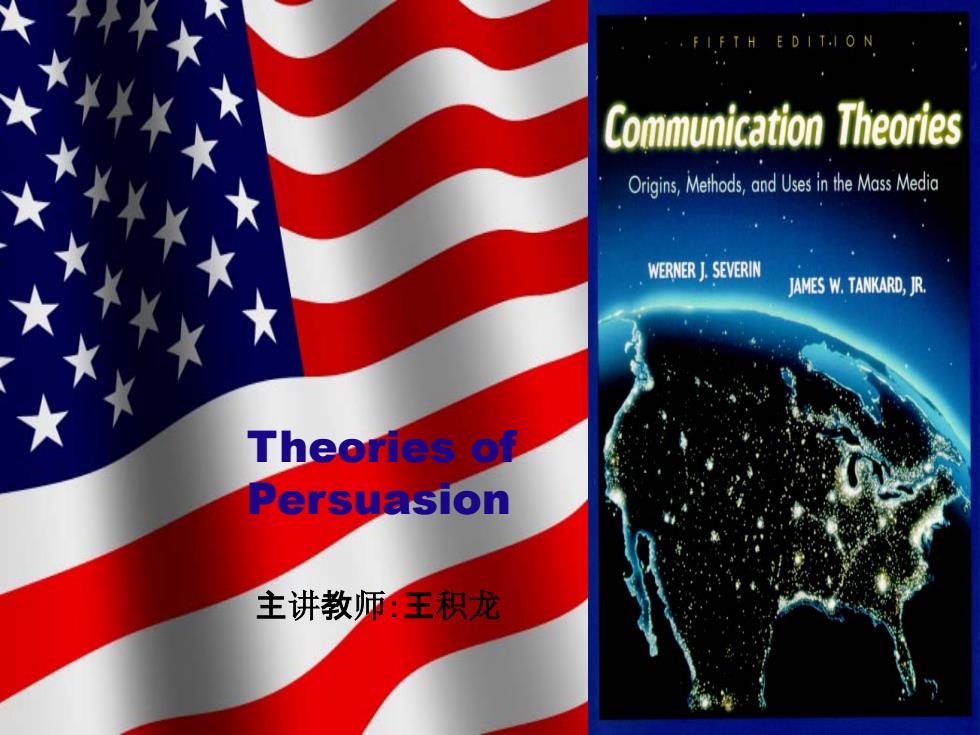
F T H E D I T.I O N Communication Theories Origins,Methods,and Uses in the Mass Media WERNER J.SEVERIN 大 JAMES W.TANKARD,JR. Theories of Persuasion 主讲教师:王积龙
ABC 123 YOUR SUBTITLE GOES HERE Theories of Persuasion 主讲教师:王积龙
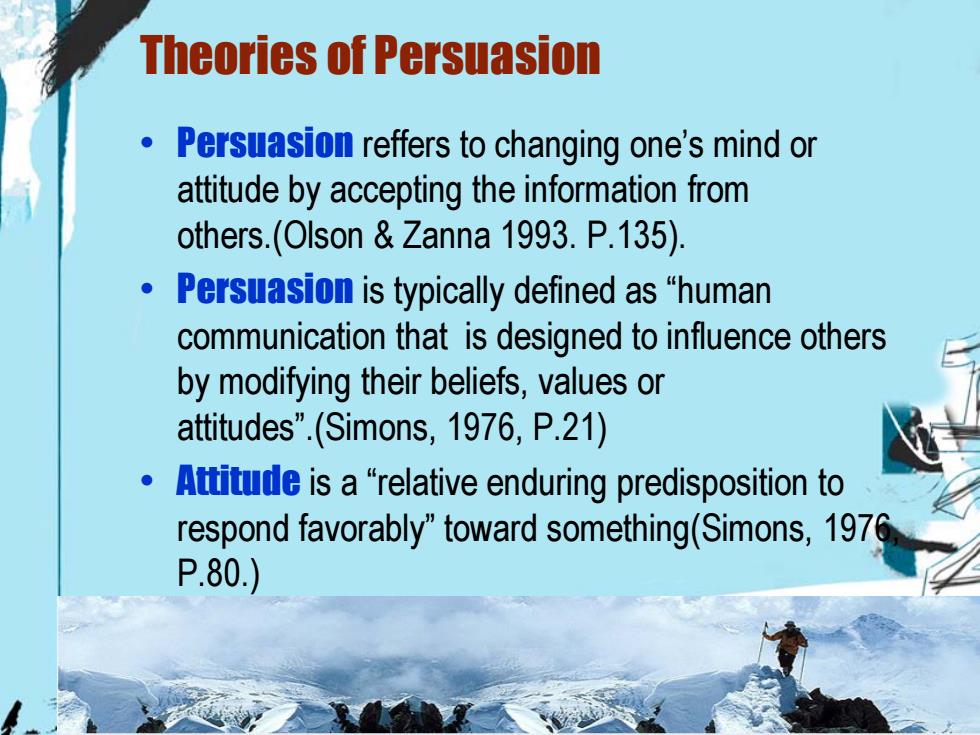
Theories of Persuasion 。 Persuasion reffers to changing one's mind or attitude by accepting the information from others.(Olson Zanna 1993.P.135). Persuasion is typically defined as "human communication that is designed to influence others by modifying their beliefs,values or attitudes".(Simons,1976,P.21) 。 Atttue is a"relative enduring predisposition to respond favorably"toward something(Simons,1976 P.80.)
Theories of Persuasion • Persuasion reffers to changing one’s mind or attitude by accepting the information from others.(Olson & Zanna 1993. P.135). • Persuasion is typically defined as “human communication that is designed to influence others by modifying their beliefs, values or attitudes”.(Simons, 1976, P.21) • Attitude is a “relative enduring predisposition to respond favorably” toward something(Simons, 1976, P.80.)
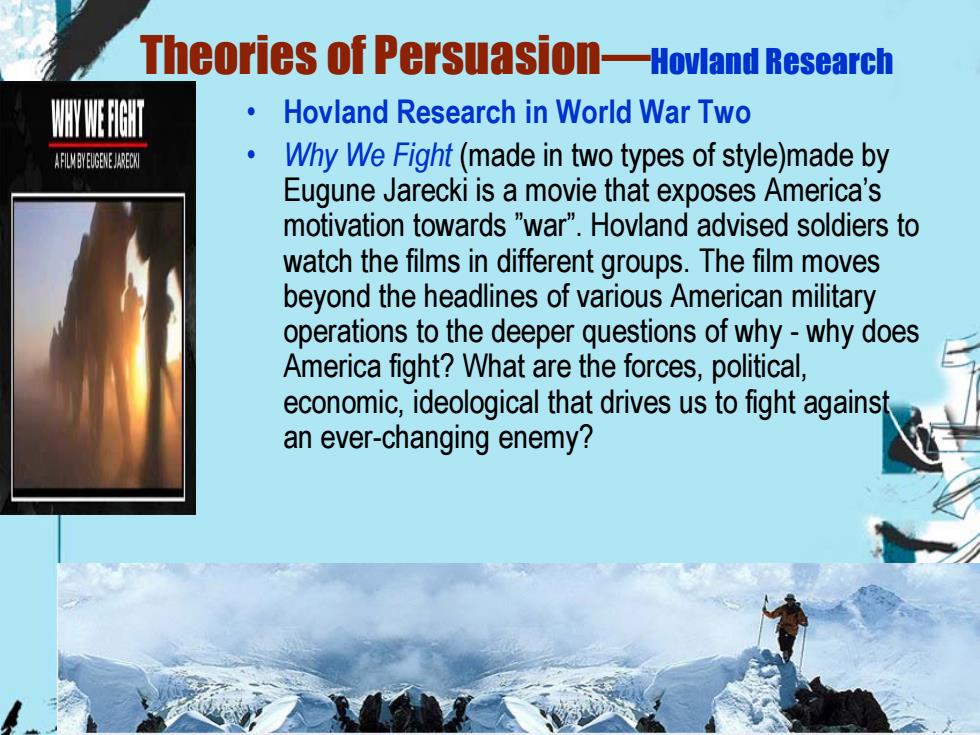
Theories of Persuasion-Hovland Research Hovland Research in World War Two AFILM BYEUGENEJAREDX Why We Fight(made in two types of style)made by Eugune Jarecki is a movie that exposes America's motivation towards "war".Hovland advised soldiers to watch the films in different groups.The film moves beyond the headlines of various American military operations to the deeper questions of why-why does America fight?What are the forces,political, economic,ideological that drives us to fight against an ever-changing enemy?
Theories of Persuasion—Hovland Research • Hovland Research in World War Two • Why We Fight (made in two types of style)made by Eugune Jarecki is a movie that exposes America’s motivation towards ”war”. Hovland advised soldiers to watch the films in different groups. The film moves beyond the headlines of various American military operations to the deeper questions of why - why does America fight? What are the forces, political, economic, ideological that drives us to fight against an ever-changing enemy?
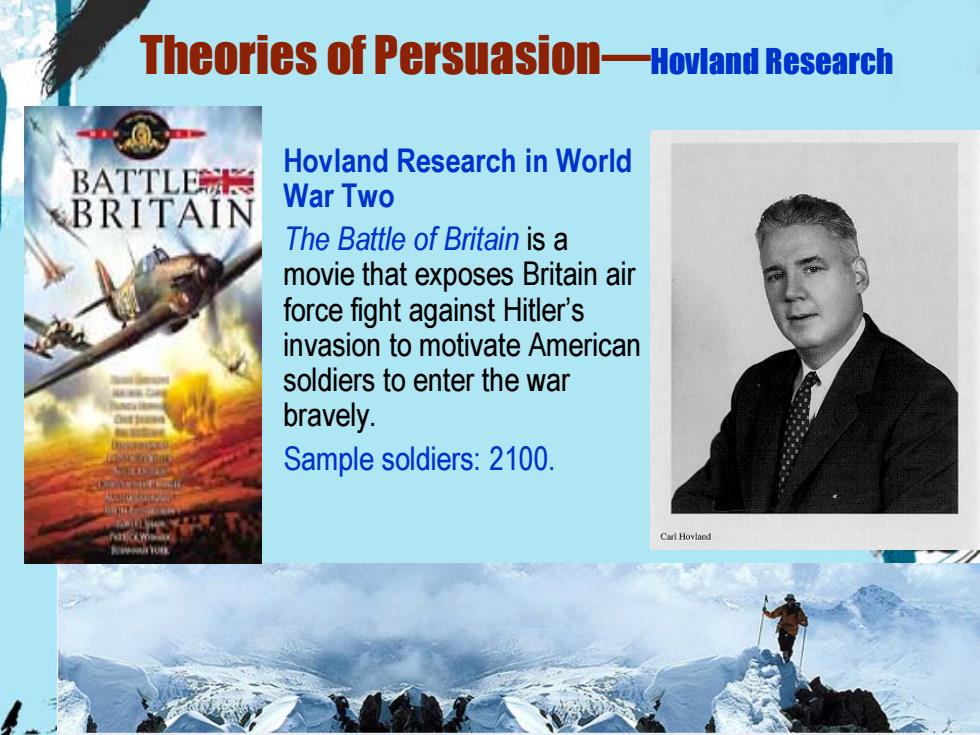
Theories of Persuasion-Hovland Research Hovland Research in World 龄恭 War Two The Battle of Britain is a movie that exposes Britain air force fight against Hitler's invasion to motivate American soldiers to enter the war bravely. Sample soldiers:2100. Ca Hoviad
Theories of Persuasion—Hovland Research • Hovland Research in World War Two • The Battle of Britain is a movie that exposes Britain air force fight against Hitler’s invasion to motivate American soldiers to enter the war bravely. • Sample soldiers: 2100
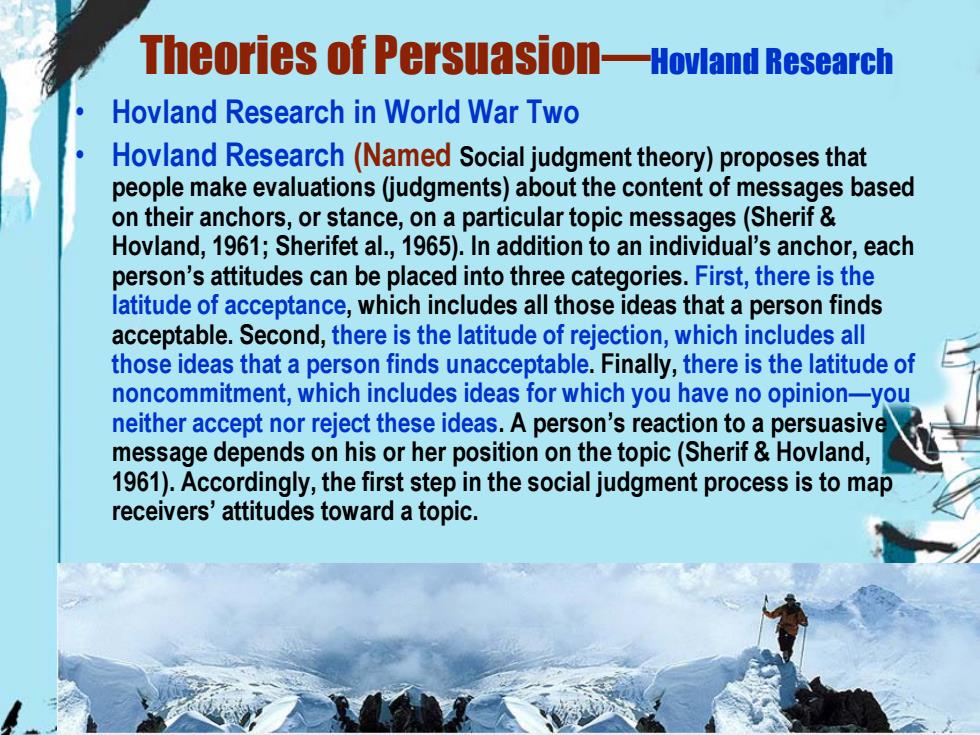
Theories of Persuasion-Hovland Research Hovland Research in World War Two Hovland Research (Named Social judgment theory)proposes that people make evaluations (judgments)about the content of messages based on their anchors,or stance,on a particular topic messages(Sherif Hovland,1961;Sherifet al.,1965).In addition to an individual's anchor,each person's attitudes can be placed into three categories.First,there is the latitude of acceptance,which includes all those ideas that a person finds acceptable.Second,there is the latitude of rejection,which includes all those ideas that a person finds unacceptable.Finally,there is the latitude of noncommitment,which includes ideas for which you have no opinion-you neither accept nor reject these ideas.A person's reaction to a persuasive message depends on his or her position on the topic(Sherif Hovland, 1961).Accordingly,the first step in the social judgment process is to map receivers'attitudes toward a topic
Theories of Persuasion—Hovland Research • Hovland Research in World War Two • Hovland Research (Named Social judgment theory) proposes that people make evaluations (judgments) about the content of messages based on their anchors, or stance, on a particular topic messages (Sherif & Hovland, 1961; Sherifet al., 1965). In addition to an individual’s anchor, each person’s attitudes can be placed into three categories. First, there is the latitude of acceptance, which includes all those ideas that a person finds acceptable. Second, there is the latitude of rejection, which includes all those ideas that a person finds unacceptable. Finally, there is the latitude of noncommitment, which includes ideas for which you have no opinion—you neither accept nor reject these ideas. A person’s reaction to a persuasive message depends on his or her position on the topic (Sherif & Hovland, 1961). Accordingly, the first step in the social judgment process is to map receivers’ attitudes toward a topic